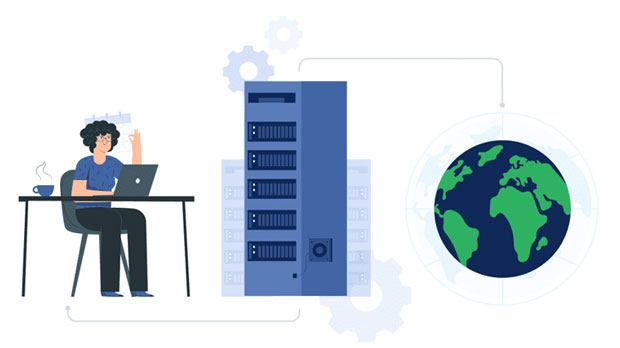When choosing proxies for various online tasks, understanding the differences between PYPROXY Mobile Proxies and PyProxy Desktop Proxies is crucial. Both types offer distinct features that cater to different use cases, depending on the user's specific needs. PyProxy Mobile Proxies are designed to emulate mobile device connections, offering advantages like dynamic IP rotation, which mimics real mobile network usage. On the other hand, PyProxy Desktop Proxies simulate desktop computer connections, offering more stable and higher-speed connections, making them ideal for different tasks like web scraping or managing multiple social media accounts. In this article, we will dive deeper into the unique characteristics, strengths, and weaknesses of both PyProxy Mobile and Desktop Proxies, providing you with a clear understanding of which option is best suited for your requirements. Understanding PyProxy Mobile ProxiesPyProxy Mobile Proxies are designed to simulate connections from mobile devices, specifically mimicking mobile networks such as 4G, 5G, or even older technologies like 3G. These proxies are ideal for tasks that require a mobile-like connection, including managing mobile applications, browsing as a mobile user, or engaging in mobile-specific activities such as location-based browsing.1. Mobile IP Rotation and Dynamic Nature One of the defining features of PyProxy Mobile Proxies is the dynamic IP rotation that mimics the behavior of real mobile devices. In real-life scenarios, mobile devices often switch between different IPs as users move across networks. PyProxy Mobile Proxies replicate this behavior, making it harder for websites to detect automated activities or IP bans.2. Mobile-Specific Use Cases Mobile proxies are beneficial when you need to interact with mobile-first websites or services that restrict access based on device types or geo-location. They are also great for bypassing geo-restrictions that target mobile IPs specifically.3. Geo-location and Carrier-Specific Access With mobile proxies, you can easily rotate between different regions and carriers, which is especially useful for businesses looking to conduct region-specific marketing campaigns or access region-locked content. This ability to change locations frequently allows for better penetration into mobile-only services.4. Lower Speed and Higher Latency However, the primary drawback of PyProxy Mobile Proxies is the slower speed compared to desktop proxies. Mobile networks generally do not offer the same speed or stability as a fixed-line broadband connection, resulting in higher latency and lower throughput.Understanding PyProxy Desktop ProxiesPyProxy Desktop Proxies, in contrast, simulate connections from traditional desktop devices. These proxies are typically connected via fixed-line broadband or fiber networks, offering more stable and faster connections. These proxies are often used for tasks that require higher bandwidth, such as large-scale web scraping, managing business accounts, or handling multiple sessions on desktop-based applications.1. Stable and High-Speed Connections Desktop proxies benefit from the stability of wired internet connections, meaning they typically offer higher speeds and lower latency than mobile proxies. This makes them suitable for tasks that demand a high level of performance, such as web scraping, e-commerce data extraction, or online gaming.2. Fixed IP Address and Less Rotation Unlike mobile proxies, desktop proxies generally offer more static IP addresses, meaning the IP address doesn't change as frequently. While this can be an advantage for certain tasks requiring consistency, it also makes desktop proxies more detectable to websites that monitor IP activity.3. Best for Data-Intensive Tasks PyProxy Desktop Proxies are particularly beneficial for activities that require large data throughput or extended sessions, such as scraping product listings, checking SEO rankings, or interacting with web-based tools that require consistent and long-running connections.4. Limited Geo-location Capabilities While desktop proxies are excellent for stability, they tend to offer less flexibility in terms of geo-location than mobile proxies. PyProxy Desktop Proxies typically do not simulate mobile carrier-specific IPs, which may limit their effectiveness in some use cases that demand mobile-like location behavior.Key Differences Between PyProxy Mobile Proxies and PyProxy Desktop ProxiesNow that we have explored the individual characteristics of both types of proxies, it's important to summarize the key differences between PyProxy Mobile and Desktop Proxies:1. IP Rotation and Dynamic Nature - Mobile Proxies: Offer dynamic IP rotation that mimics the behavior of real mobile networks. - Desktop Proxies: Typically offer more static IPs, making them better suited for tasks requiring consistency.2. Speed and Latency - Mobile Proxies: Tend to have slower speeds and higher latency due to the nature of mobile networks. - Desktop Proxies: Provide faster, more stable connections with lower latency.3. Use Cases - Mobile Proxies: Ideal for tasks involving mobile-specific services, such as mobile app management, geo-location tasks, and bypassing mobile IP restrictions. - Desktop Proxies: Best suited for data-intensive activities, such as web scraping, managing multiple business accounts, and accessing high-bandwidth websites.4. Geo-location Flexibility - Mobile Proxies: Allow for more flexibility in terms of geo-location and carrier-specific access. - Desktop Proxies: Offer fewer location options and are less dynamic in terms of switching between regions.Choosing the Right Proxy for Your NeedsWhen deciding between PyProxy Mobile and Desktop Proxies, the choice largely depends on the nature of the tasks you intend to perform. Here’s how you can make an informed decision:1. Use Case - If your work requires you to interact with mobile-specific platforms, mobile apps, or services that are restricted to mobile devices, PyProxy Mobile Proxies are your best bet. They are perfect for testing mobile applications, handling mobile user-proxy traffic, or simulating mobile device behaviors. - For tasks that require a stable, high-speed connection and involve data-heavy processes like web scraping, SEO analysis, or bulk data extraction, PyProxy Desktop Proxies would be the better choice. Their reliability and speed can handle larger volumes of data without slowing down.2. Geo-location Considerations - If accessing content based on location or carrier is important, mobile proxies give you more flexibility in terms of regional access. Whether you're looking to test geo-restricted services or perform market research in different countries, mobile proxies allow you to change locations with ease. - For more consistent access without the need for frequent location switching, desktop proxies are a reliable option.3. Performance Requirements - If you require higher speeds, stability, and less latency, then PyProxy Desktop Proxies are the more suitable option. They provide the kind of performance necessary for tasks like web scraping, data analysis, and e-commerce tracking.In summary, both PyProxy Mobile Proxies and PyProxy Desktop Proxies have distinct advantages depending on your needs. Mobile proxies excel in tasks requiring dynamic IP rotation, mobile-specific services, and location-based browsing, but they come with the trade-off of slower speeds. On the other hand, desktop proxies are ideal for high-speed, data-intensive activities, providing stable connections for tasks such as web scraping or managing large-scale projects. By evaluating the type of tasks you need to complete and considering factors such as speed, stability, and geo-location requirements, you can choose the best proxy solution that aligns with your objectives.
Oct 22, 2025


































































